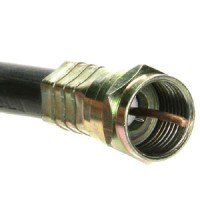Here is my top 5 things to consider when choosing the coax connector.
- Frequency of Operation
Frequency refers to the number of times a periodic action occurs in one second. The SI unit for measuring frequency is hertz. RF connectors are grouped into families, or series. Each series is designed to operate in a frequency range. SMA connectors are an ideal connector for many applications due to its wide frequency range of 0-18 GHz.
- Characteristic Impedance
Impedance matching is a crucial consideration in the designing process. The SI unit for measuring impedance is Ohms. Most connectors operate between 50-95 ohms. RF connectors used in audio and video applications, such as BNC and F connectors usually operate at 75 ohms. Most 2400 MHz applications operate at 50 ohms.
- Gender
In the world of RF connectors, plugs are typically referred to as “male” and are threaded on the inside. Jacks are usually “female” and contain threads on the outside. Not all RF connectors are threaded. MCX connectors utilize a snap on mating mechanism. A good rule of thumb is that plugs house the contact pin. Except for Reverse Polarity Connectors that have a Male body and female centre contact, most commonly used in wireless network systems.
- Size
Since the development of the first UHF connector in the 1930’s, Coax connectors have been getting smaller. The micro-miniature IPX connector boasts a profile of only 2.5mm! Keep in mind however; there is a trade-off between size and power handling.
- Coupling Style
The mating mechanism associated with an RF Connector is another one of the factors concerning durability. The common threaded interface provides a secure connection for SMA connectors, but is not convenient for frequent disconnects as the bayonet locking feature of the BNC connector. Snap on mating is becoming more common in more space critical applications.
These considerations serve as a reference summary of top considerations when choosing a coax connector for your application. Trade off’s often occur between these factors. However, each project demands its own set of requirements. Decide what works best for YOUR project.
Or talk to your friendly cable assembler who will be happy to help!

